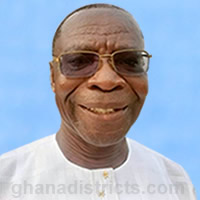Tourism Attractions
The Atiwa District is endowed with an enviable potential that predisposes the area to tourism development. The potential of the District include physical, historical and cultural variants that could be developed for conventional tourism. The scenic landscape and multiple ethnic characters make the area a favourable destination for adventure-seeking and exploratory tourists.
Other existing attractions are the water falls, forest reserves, historic places, cultural heritage and supporting facilities such as hotels and parks. Notable among the identified tourist sites is Tini waterfalls which has great potentials to attract large patronage. Tini waterfall has been relatively developed and being patronized by both local and international tourists. Tini Waterfall is located in a lush ever green forest about 6km from Adasawase, a small farming community of about 6km from Anyinam off the Accra-Kumasi highway in the Atiwa District of the Eastern region.
The attraction consists of spectacular cascading waterfalls over a giant rock formation and an ancient cave. A receptive centre has been developed and the Assembly is seeking a private entrepreneur to run the place at a negotiated sharing formula.The nearness of the District to the regional capital and to some extent the national capital can boast the tourism development in the area.
Ethnicity
In terms of ethnicity (i.e. categorizing social or tribal groups), the people of Atiwa are predominantly Akyems who constitute 70% of the population. Other minority groups include the Akuapems, Asantes, Krobos, Ewes and Kotokoris. The various ethnic groups live harmoniously together.
Festivals
Ohum Festival
Ohum festival is celebrated by the people of Akyem descent. The festival which falls between mid-June (Ohumkan) and ending of June (Ohumkyire) each year, is celebrated with pageantry throughout Akyem land. The actual celebration is spread over three days. The celebration is however, preceded by two weeks of absolute quietness, within which a ban is placed on all manner of activities that will disturb the quietness of the period.
The first day to usher in the celebration in marked by general cleaning of the household items and general cleaning. The second day is a period of relaxation and reflection marked by absolute quietness. It is a day to remember departed member of the community and to meditate over their lifestyle-especially the positive contribution they made towards the improvement of their societies.
The third day which marks the climax of all the festivities is a day of feasting and merry making throughout the Akyem land. The morning is marked by preparation of traditional meals and the pouring of libation to the ancestors, invoking their spirit and inviting them to participate in the celebration. In the afternoon, the chief usually sit in state and leads a procession. Of the people through the principal street of the town amidst traditional and brass band music.
Odwira Festival
This festival is an occasion for the purification of the Black Stool of Okyeman kings. The Black Stool is the traditional and symbolic seat which by custom is reserve for Akyem king. The period of ODWIRA which means CLEANSING, is not used only for purification and reconciliation but most importantly for planning development projects for the community. The festival is climax by a grand durbar of chiefs where issues of developmental concerns are sorted out and /or dealt with the chiefs and elders.
Daad Buo (SHRINE) Festival
DaadeBuo is a shrine for the Adasewase stool land and it is closely connected with the black stool. The chief priest of the shrine is the head of the Aduana clan. Celebration of the DaadeBuo festival lasts for a week and is marked by cultural displays and traditional dances.
The most significant aspect of the festival is that barren women visit the shrine to ask for fertility. This is done by eating a portion of the food offered to the gods and by the next festival season, they come back with thanks offering to the gods carrying their babies on their back. For this reason, DaadeBuo shrine is largely thronged by women during a week-long period of celebrations.
Date Created : 11/23/2017 5:35:57 AM





 facebook
facebook X (twitter)
X (twitter) Youtube
Youtube +233 593 831 280
+233 593 831 280 0800 430 430
0800 430 430 GPS: GE-231-4383
GPS: GE-231-4383 info@ghanadistricts.com
info@ghanadistricts.com Box GP1044, Accra, Ghana
Box GP1044, Accra, Ghana